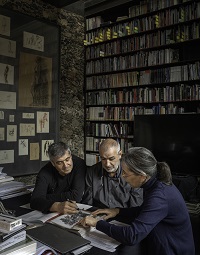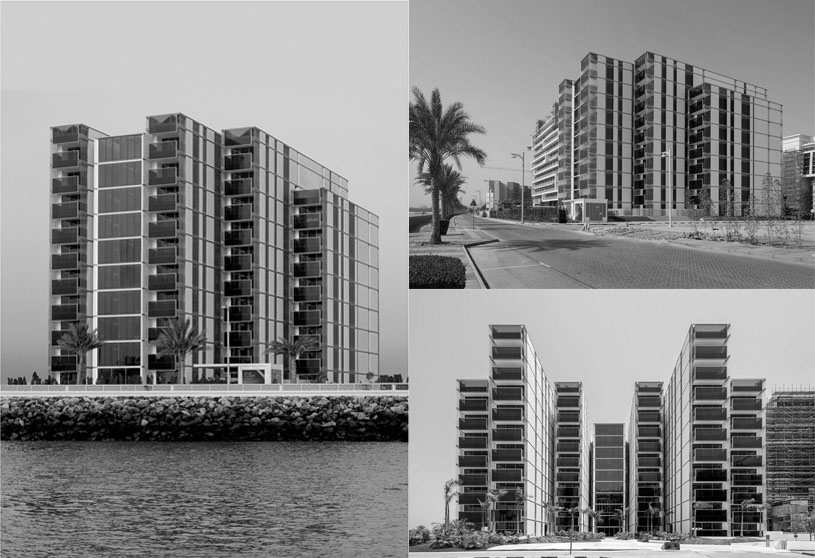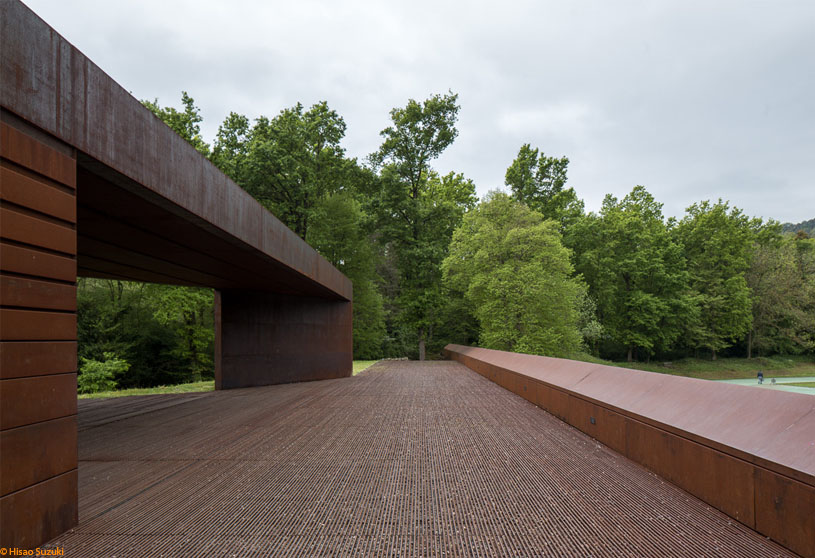(“Text as submitted by architect”)
 Rafael Aranda
Rafael Aranda
Rafael Aranda was born in Olot, Spain, in 1961. He graduated as an architect from the School of Architecture of the Vallès in 1987.
Carme Pigem
Carme Pigem was born in Olot, Spain, in 1962. He graduated as an architect from the School of Architecture of the Vallès in 1987.
Ramon Vilalta
Ramon Vilalta was born in Vic, Spain in 1960. He graduated as an architect from the School of Architecture of the Vallès in 1987.
Rafael Aranda, Carme Pigem and Ramon Vilalta are architects from the School of Architecture of the Vallès in 1987 and founded RCR Arquitectes in 1988. Since 1989, they have advised architects of the Natural Park of the Volcanic Area of La Garrotxa.
They hold the Pritzker Prize 2017. Other distinctions are Chevaliers de l’Ordre des Arts et des Lettres of France 2014 and 2008, Honorary Members by the RIBA Royal Institute of British Architects 2012 and the AIA American Institute of Architecture 2010.
In 2013, they created the RCR BUNKA Foundation to stimulate the assessment of architecture and landscape and, implicitly, arts and culture. In 2017, they established the laboratory RCR Lab·A for investigation, which leads the RCR La Vila project for the Space Experience Centre. They have since 2008 the RCR Summer Workshop.
They have participated in international exhibitions, including the Venice Biennial and venues in Spain, France, Japan, and Mexico. Their work has been widely published in books and magazines, including four El Croquis monographs.
Among their works are the Athletic Stadium Tossols-Basil, the wineries Bell-lloc and Perelada and the Les Cols restaurant, marquee and pavilions in Spain, the Soulages Museum in France, and the Waalse Krook Mediatheque in Belgium.
Practice Ideology
RCR is an integrating project whose origins lie in architecture but are not limited to architecture as a discipline and integrates landscape, design, art, and thought. It is also a transversal laboratory for ideas and a cultural space. The strength of RCR’s architecture lies in its ability to transcend its roots with a universal language resulting from a profound search for the essential.
For its founders, Rafael Aranda, Carme Pigem, and Ramon Vilalta, this essence emerges from the search for emptiness, from a dialogue between place and architecture. Still, at the same time, it is born of creative dialogue in the jazz style in which “me” is changed into “us.” This architecture, born of shared creativity, refers to relational values and processes in all senses. It extends from this logic outside the discipline itself, with a holistic vision that encompasses something greater than architecture itself, which is life. And in life itself, it proves that dreams are possible.


